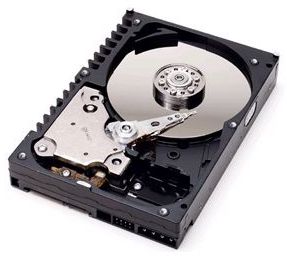Hard Drives - ATA versus SATA
By Jason Kohrs
The performance of computer systems has been steadily increasing as faster
processors, memory, and video cards are continuously being developed. The one
key component that is often neglected when looking at improving the performance
of a computer system is the hard drive.

Hard drive manufacturers have been constantly evolving the basic hard drive
used in modern computer systems for the last 25 years, and the last few years
have seen some exciting developments from faster spindle speeds, larger caches,
better reliability, and increased data transmission speeds.
The drive type used most in consumer grade computers is the hearty ATA type
drive (commonly called an IDE drive). The ATA standard dates back to 1986 and is
based on a 16-bit parallel interface has undergone many evolutions since its
introduction to increase the speed and size of the drives that it can support.
The latest standard is ATA-7 (first introduced in 2001 by the T13 Technical
Committee (the group responsible for the ATA standard)) which supports data
transfer rates up to 133MB/sec. This is expected to be the last update for the
parallel ATA standard.
As long ago as 2000 it was seen that the parallel ATA standard was maxing out
its limitations as to what it could handle. With data rates hitting the
133MB/sec mark on a parallel cable, you are inviting all sorts of problems
because of signal timing, EMI (electromagnetic interference) and other data
integrity issues; thus industry leaders got together and came up with a new
standard known as Serial ATA (SATA). SATA has only been around a few years, but
is destined to become “the standard” due to several benefits to be addressed in
this Tech Tip.
The two technologies that we will be looking at are: ATA (Advanced Technology
Attachment) – a 16-bit parallel interface used for controlling computer drives.
Introduced in 1986, it has undergone many evolutions in the last 18 plus years,
with the latest version being called ATA-7.
Wherever an item is referred to as being an ATA device, it is commonly a
Parallel ATA device. ATA devices are also commonly called IDE, EIDE, Ultra-ATA,
Ultra-DMA, ATAPI, PATA, etc. (each of these acronyms actually do refer to very
specific items, but are commonly interchanged) SATA (Serial Advanced Technology
Attachment) – a 1-bit serial evolution of the Parallel ATA physical storage interface.
| 
